No other cladding material can offer the design freedom, ease of handling, range and natural beauty of timber. Timber cladding can create a building to suit almost any environment, taste or style.
Timber cladding has an inbuilt flexibility that provides natural advantages on sites subject to high winds, extreme climate, highly reactive soils, subsidence or earth tremors. And unlike masonry and other rigid materials, the natural resilience and high strength to weight ratio of timber enables it to withstand far greater stresses and movement.
Modern finishes give a long lasting and attractive appearance to timber cladding and can be used to change the colour and style of the building, making it a versatile material that will keep pace with changing tastes and fashions.
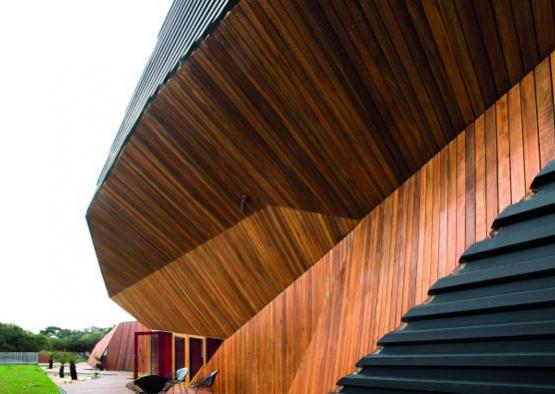
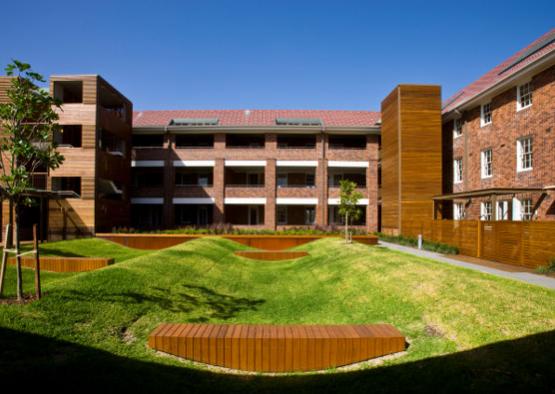
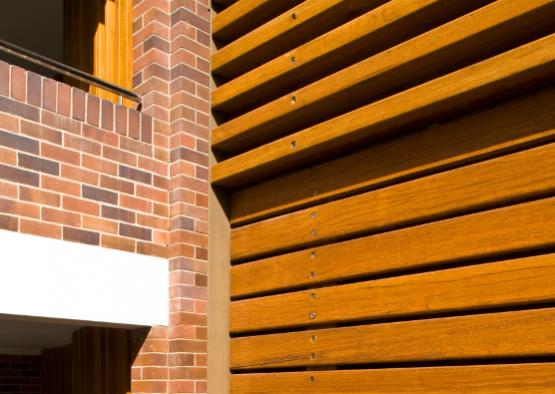
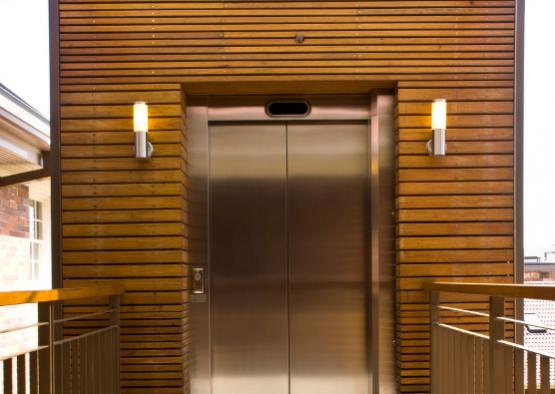
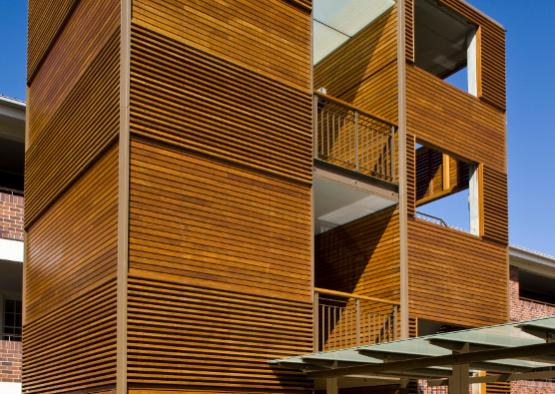
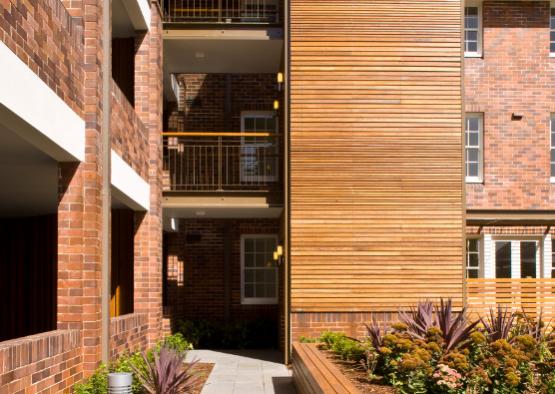
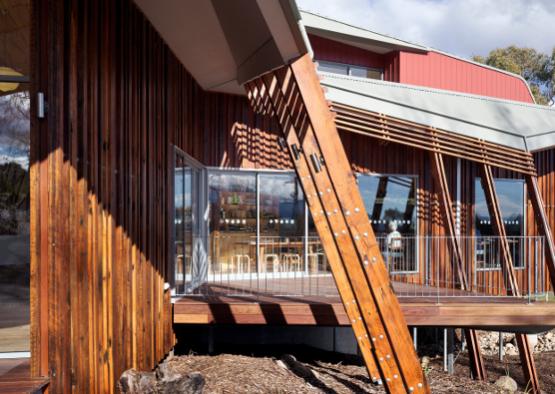
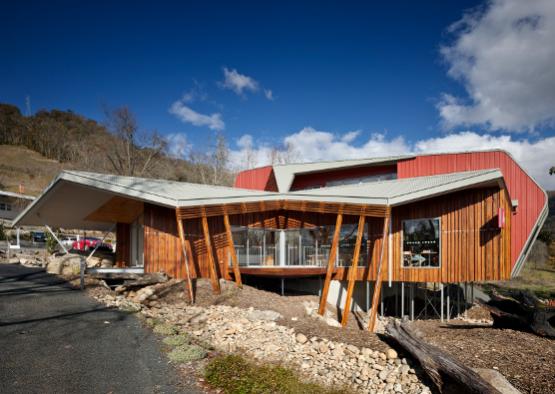
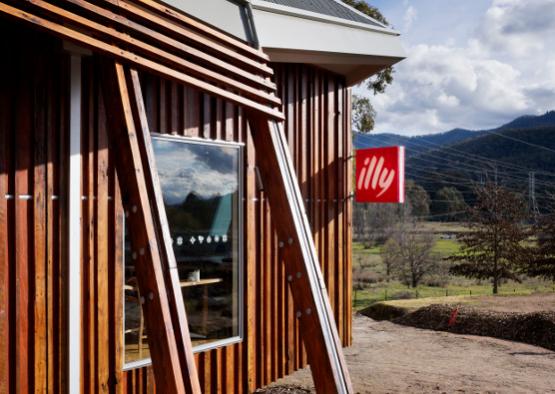
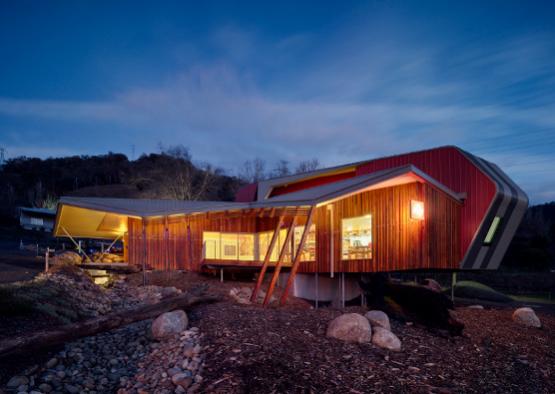
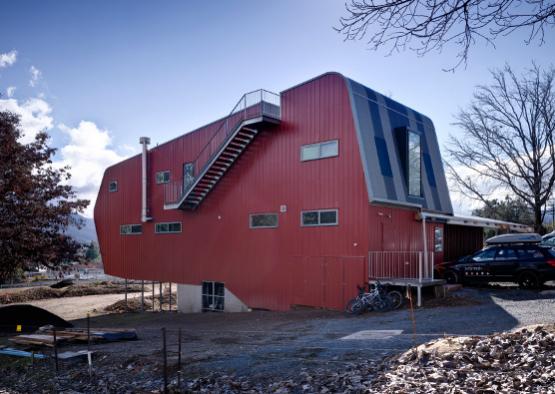
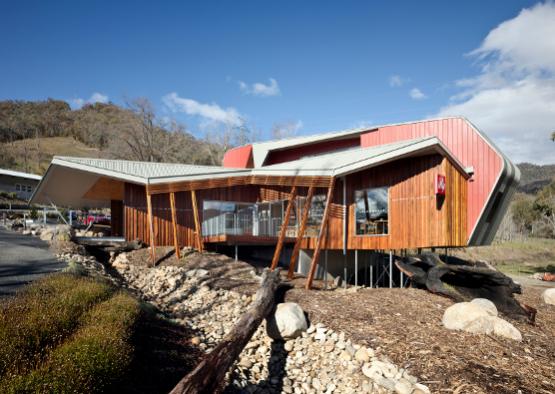
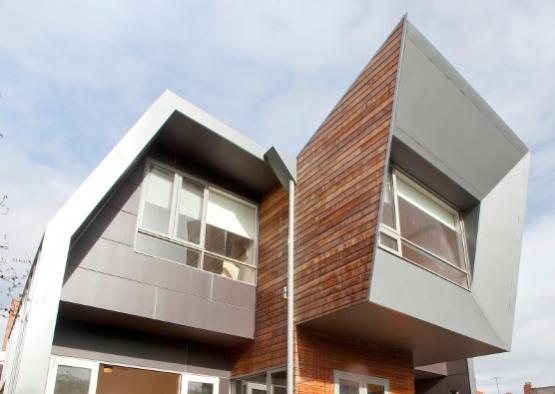
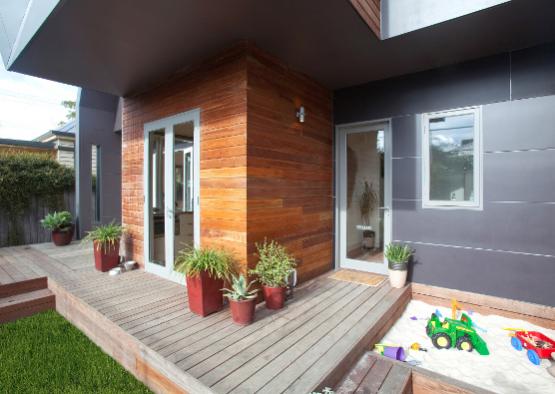
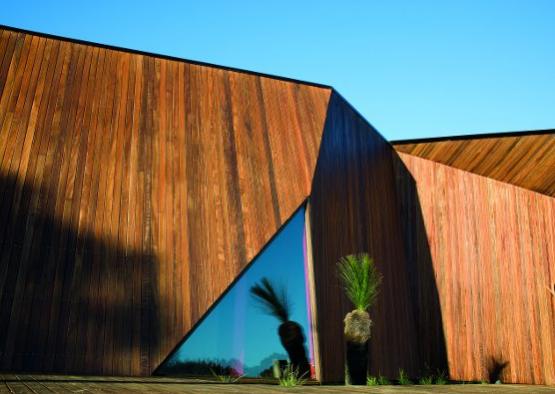
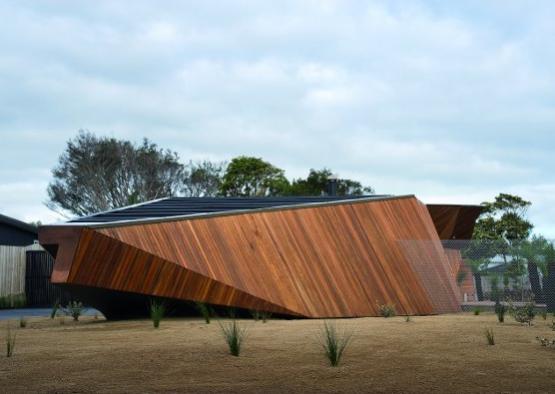
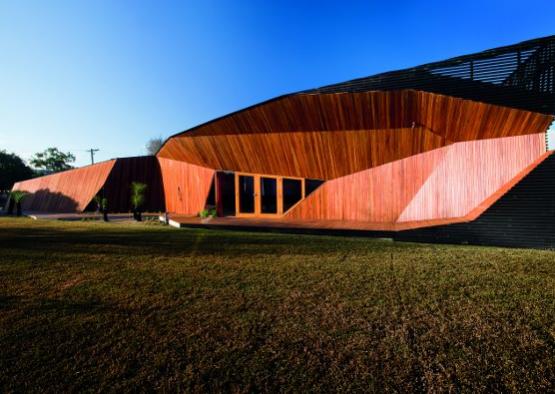
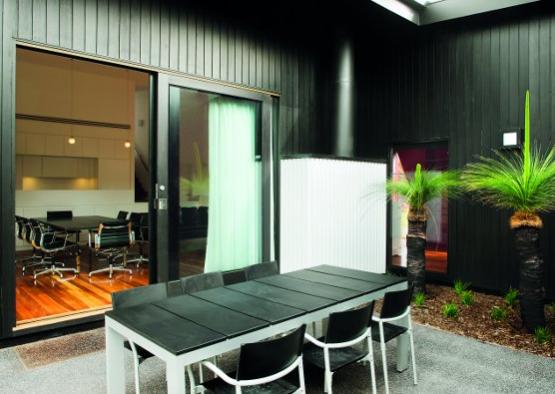


















No other cladding material can offer the design freedom, ease of handling, range and natural beauty of timber. Timber cladding can create a building to suit almost any environment, taste or style.
Timber cladding has an inbuilt flexibility that provides natural advantages on sites subject to high winds, extreme climate, highly reactive soils, subsidence or earth tremors. And unlike masonry and other rigid materials, the natural resilience and high strength to weight ratio of timber enables it to withstand far greater stresses and movement.
Modern finishes give a long lasting and attractive appearance to timber cladding and can be used to change the colour and style of the building, making it a versatile material that will keep pace with changing tastes and fashions.
A wide variety of timber cladding products are available for selection, including solid timber boards in a range of profiles and species, timber shingles or shakes, along with various types of plywood and exterior grade hardboard in plain or surface textured sheets or planks.
When specifying cladding boards there are a number of points that should be considered:
- The appearance required by the architectural style
- Availability and cost
- Ease of installation and maintenance
- Prevailing climate and thermal performance required for the building
- The need, if any, for above average structural strength, which some specific types of cladding will provide
- Local government regulations or statutory requirements
Designers should be fully informed when making their decision. Specific advice is available from suppliers or Timber Advisory Services.
Where timber clad walls will experience moderate to severe weather exposure, cladding manufactured from the highest available grade of timber should be specified.
AS 2796 Timber Hardwood sets out details of grade descriptions, machining grade limits and tolerances for external cladding. The standard does not specify profile details or overall dimensions and these will vary between individual manufacturers. Grades for softwood - sawn and milled products are set out in AS 4785.
When hardwood cladding is specified preference should always be given to a naturally durable species. The southern Australian states are an exception to this, as timber hazard conditions there are less severe, a satisfactory service life can be expected from commonly available (but non-durable) eucalypts such as alpine ash, mountain ash or messmate (solid mixed as Tasmanian oak) provided good fixing, finishing and maintenance is carried out.
Cypress Pine - Cypress Pine cladding has high natural durability. Grade descriptions are set out in AS 1810 or in industry standards that can be obtained from manufacturers and suppliers.
Preservative Treated Pine - The most common species used are radiata pine, slash pine and hoop pine. Other native conifers are also used for cladding but because of their low natural durability they should always be preservative treated before use. For grade descriptions refer AS 1784 and AS 1495.
Imported timbers - The most commonly used imported timber cladding is western red cedar. Other imported timbers used for cladding include redwood and Baltic pine. Western red cedar is usually available as either sawn weatherboards up to 250mm wide or sawn or dressed face channel profiles up to 200mm wide.
At present there is no Australian Standard to cover the grades of western red cedar or other imported cladding timbers. Specifiers are referred to suppliers or local Timber Advisory Services for information on available grades.
Timber cladding is generally produced from 150mm to 200mm wide boards, anything wider increases the risk of cupping or splitting. The common types of weatherboard sections and their most common names are illustrated in the figure below.
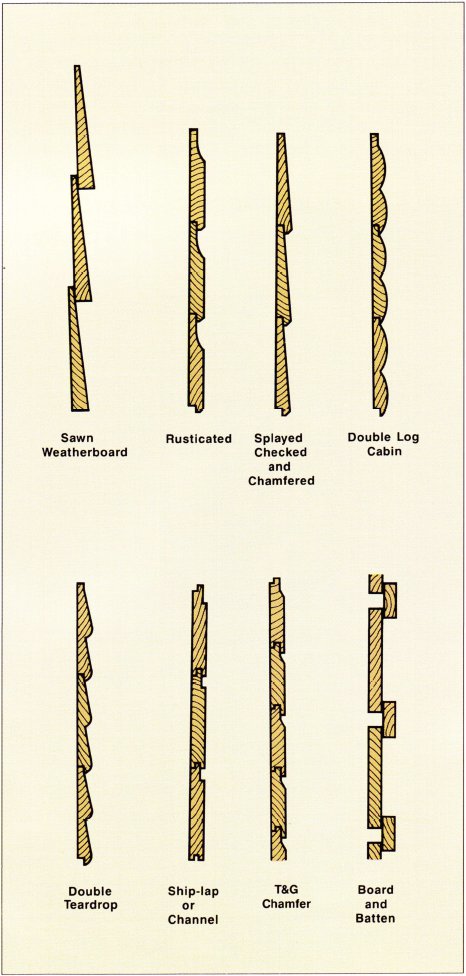
The specific details of these profiles will vary slightly between regions and manufacturers. For complete details of sizes and profiles readily available in local areas, contact local suppliers.
A variety of engineered wood products are manufactured for use in exterior cladding and make an attractive and economical alternative to solid timber cladding.
Plywood cladding offers a stylish exterior for all building types. Exterior plywood cladding is manufactured to AS 2271, is intended for use in non-structural applications and comes in a wide variety of face veneer grades that may be profiled, grooved, plain faced or pre-surfaced with resins, plastics or metal.
Much of the plywood sold in Australia that is suitable for exterior cladding is produced within quality assurance programs. All such material carry a relevant brand mark indicating that the product has been quality controlled to the requirements of the program. When plywood does not carry an appropriate brand mark users should confirm it meets the requirements of AS 2271-Plywood and Blockboard for Exterior Use.
Exterior grade hardboard (a compressed wood fibreboard) is manufactured in Australia to AS 1859 and is used as cladding in all exterior cladding applications. The manufacturer should be consulted for guidelines when using hardboard sheet cladding as structural bracing or for construction details when diagonal or vertical application of the boards is planned.
Hardboard exterior cladding is supplied in lengths up to 3660mm in packs containing planks boards 9.5mm thick and either 200mm or 300mm normal width. The long edges of the planks are lightly bevelled, and the face, edges and ends are factory prime coated.
Where cladding abuts masonry, a gap should be left to prevent moisture in the masonry from being taken up by the boards. Alternatively, ends can be sealed and the joint protected by a coverstrip set in mastic. The ends of diagonal boards must be well drained and protected from water.
An illustrated example of some typical details.
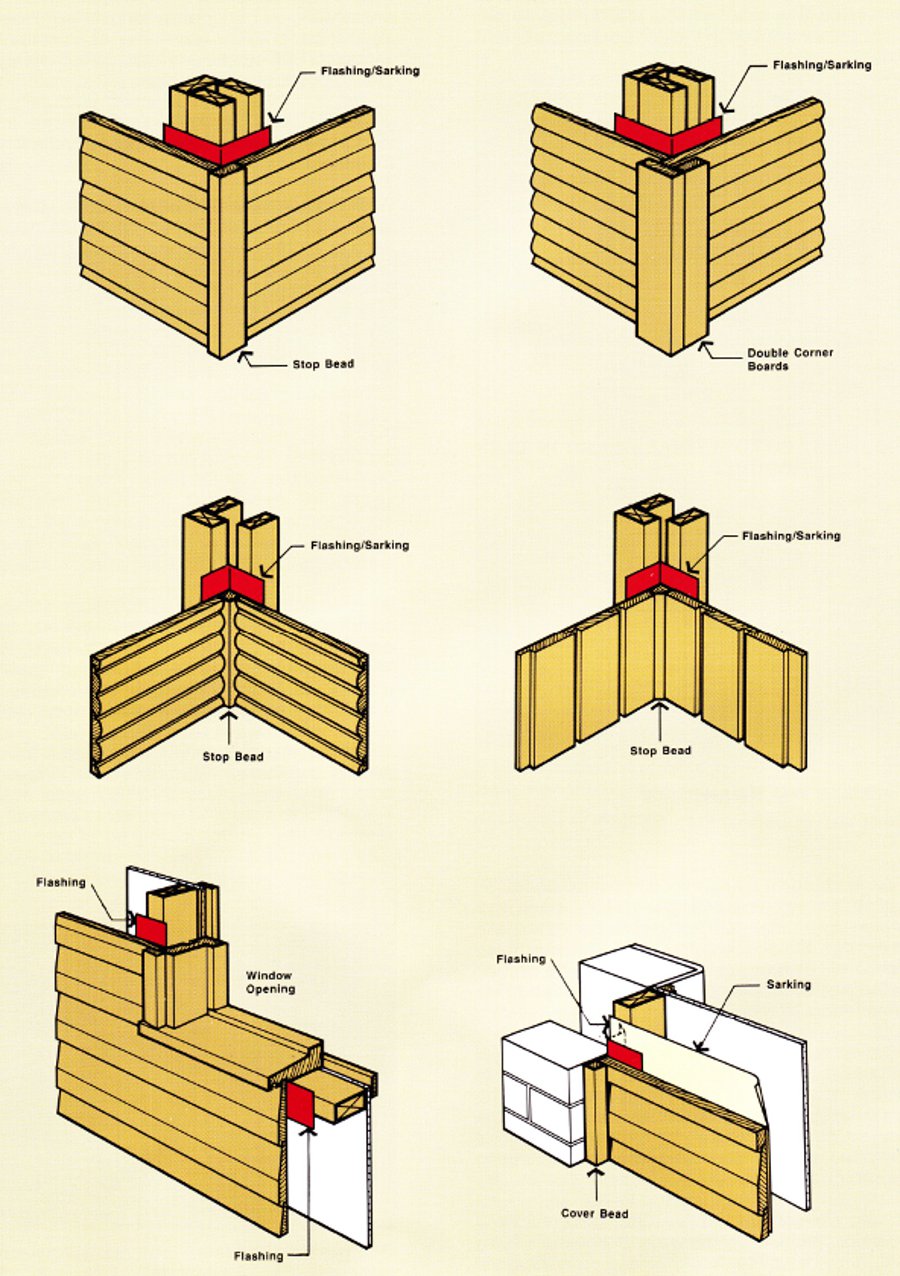
These profiles are sealed and installed like weatherboards minus a packing piece, no allowance for shrinkage and two nails, instead of one, are used to fasten each board. With the tongue facing upwards, the tongue and groove are brought tightly together by using a chisel as a lever. The final board will need to be cut to fit whatever space remains at the top as overlapping on these profiles generally cannot be altered.
In the first instance, frames must comply with the requirements of the local building authority. Preferred spacing of studs or fixing battens is generally 450mm and 600mm. Diagonally fixed cladding should be fixed at no more than 650mm centres measured along the board.
For the longterm performance and overall appearance of a finished wall, selection of the correct fixing nails is critical.
For timber cladding, non corrosive nails such as hot dipped galvanised, should always be the first choice. Plain steel nails are only suitable where they are punched and puttied and the cladding is finished with an oil based paint system. Flat head nails may be used to provide additional restraint of treated pine and Western Red Cedar cladding, while silicon bronze nails will provide a superior appearance when Wester Red Cedar is coated with a natural or stained finish.
The table below gives a guide to recommended nail sizes.
|
Cladding Thickness |
Nail Size (mm) |
|
|
Cypress Pine and Hardwood Framing |
Softwood framing |
|
|
15-22 mm Cypress and Hardwood |
50x2.8 plain |
65x2.8 plain 50x2.8 twisted |
|
15-22 mm Softwood |
50x2.8 plain 50x3.15 twisted |
50x3.15 twisted |
|
Sawn Weatherboards |
60x3.15 plain 50x3.15 twisted |
65x2.8 plain 50x3.15 twisted |
Extra care should be taken where nailing guns are used to ensure that all components are suitable for the cladding being fastened, that the nails are not driven too deeply and that excess pressure does not distort the boards.
To reduce the likelihood of cupping, cracking and splitting, cladding should be fastened so that the boards are free to shrink and swell individually. The figure below demonstrates typical nailing patterns. Note that nails should not fix adjacent boards together and that some cladding boards may require pre-drilling of nail holes at the ends of boards to avoid splitting.

Secret nailing or the use of shorter nails is not recommended because they do not provide adequate long term fastening. Deformed shank or longer nails should be used where cladding is fixed to softwood frames. Please note that building adhesives currently available are not suitable for fixing solid timber cladding.
To reduce the possibility of trapping water, grooved cladding that is fixed horizontally or diagonally must always be positioned facing down. To reduce the ingress of windblown water, vertically installed tongue and grooved or lapped cladding, should face joints away from incoming weather. Sealers or mastic should not be used to seal edge joints.
To avoid unnecessary exposure of ends, single length boards should be used on exposed walls, wherever possible. Tight fitting joints are achieved by cutting a board slightly over length, bowing to get it into position and pushing it into place, as demonstrated by the following figure.

The regular application of water repellent finishes reduces the effects of swelling and shrinkage caused by moisture content changes.
Ongoing sunlight exposure will change the surface colour of uncoated timber to silver grey. The greying of timber cladding will vary depending on the degree and level of exposure. Uncoated timber remaining damp for extended periods may develop dark discolouration due to surface mould.
In some instances a natural weathered appearance is desired and certain types of timber cladding will, with minimum finishing and maintenance, perform well under these conditions. Timber specified for such applications should be a naturally durable species or CCA preservative treated softwood. All timber, however, requires some finishing and regular maintenance to offer an extended service life.
Whether a natural, stain finish or paint system is used, the manufacturer's recommendations for application must be followed precisely to ensure the most long lasting result is achieved.
Liberal application of a clear water repellent preservative will help maintain a natural looking timber in good condition. Initially more frequent maintenance than stained or painted timber will be required, however with successive applications over a period of time, water repellent preservative compounds will build up in the timber surface and thus the periods between required maintenance will be extended.
Be aware that linseed oil or mixtures containing a large proportion of linseed oil should never be used on timber cladding as a natural finish. Mould and fungi feed on the oil and will discolour the timber, resulting in removal that is difficult and time consuming.
Oil based paints or stains, formulated for exterior timber finishing are recommended where reliable long term performance and a high standard of appearance are required.
In areas of high temperature, pale coloured finishes are recommended as they absorb less heat and will thus provide greater protection to the timber.
A common problem with the application of stained finishes is that the stain is applied to heavily and does not completely absorb into the timber. Apply only as much stain as the timber will absorb. To achieve this do not overload the brush and during application apply the stain evenly along the wood. After allowing a short time for the stain to absorb, apply a dry brush over the existing work to even out any patchiness.
If more stain has been applied than the timber will absorb, brush any excess into unpainted sections or remove by wiping with a soft cloth.
The type of finish selected and the degree of weather exposure will dictate the frequency of maintenance and re-finishing required. Generally after 12 to 18 months, shrinkage will have finished and the final finish top coats can be applied following suitable preparation.
Note that clear finishes provide minimal protection against the UV effects of the sun and will breakdown after prolonged UV exposure. When used on their own they require reapplication at six months intervals.
In response to to changes in its environment, all timber will take up moisture, lose moisture and adjust dimensionally.
The actual equilibrium moisture content (EMC) will vary by location and through the seasons so that at any given time, timber in service may have a moisture content ranging from approximately 6 to 18%. Timber cladding will usually be supplied as ‘dry', 'kiln dried' or ‘seasoned' and will have moisture content in the range of 10 to 15%. The main exception to this is some sections of western red cedar, cypress pine and hardwood weatherboards which may be supplied unseasoned.
Unseasoned cladding will shrink as it dries and allowance must be made for shrinkage by increasing the overlap of boards. Wider unseasoned boards may also develop slight cupping across the face unless restrained and should be fixed as soon as possible after delivery.
When machined profiles are produced from seasoned timber the design of the edge-joint will allow for movement due to seasonal changes in equilibrium moisture content. Other than exercising proper care and good workmanship during installation, no special precautions need to be taken to compensate for slight expansion and contraction in service.
When fixing, it is important that nails are positioned in such a way that movement of boards, caused by changes to EMC, does not create stresses sufficient to cause splitting of the timber. Individual boards must not be nailed together at the lap.
The Building Code of Australia details regulations that govern the fire performance requirements of materials used in the construction of all building forms.
Fire regulations for materials used in construction of Class 2 to 9 buildings (other than floor, wall and ceiling coverings) are covered by Specification C1.10 Fire Hazard Properties.
The Specification places limits on the Spread of Flame Index and Smoke Development index for various types of buildings and the locations of these buildings.
In many parts of Australia the construction of new buildings and building extensions will be assessed as being in a Bushfire Prone Area. The relevant Australian Standard, AS 3959, provides for a range of Bushfire Attack Levels for proposed construction. Each level is based on the assessed threat and as the assessed threat increases, so to do the restrictions on the building materials that may be used.
There are no special requirements for external cladding when a home is fully brick veneer, however where light-weight cladding sections are used, for instance above windows and doors, the same requirements as for a totally light-weight clad building apply.
For homes deemed to be at low risk of fire attack, normal timber products and other lightweight cladding materials can be used. For homes at moderate risk, timber cladding needs to be bushfire-resisting or made from timber species listed in AS 3959E1 (species with density of 750 kg/m3 or greater). Joints in the cladding need to sealed or the framing externally sarked.
For home sites at higher risk, it is worth considering building to the highest flame zone rating, BAL-FZ, where a fire resistance level (FRL) of 30/30/30 is required. This can be achieved with a fire rated plasterboard/timber system, which will actually give a higher rating (16 mm fire grade plasterboard provides a 60/60/60 FRL). Major plasterboard manufacturers can supply more information on suitable products and simple, cost-effective solutions.
Cladding is an integral part of the overall building design as it contributes to aesthetics, comfort and structural stability. Obtaining the best performance in these aspects depends on good design, proper construction practice and correct installation.
The design requirements for timber clad buildings are generally the same regardless of the particular cladding material used.
Timber cladding will perform to its best in building styles where it is sheltered from the weather by wide eaves and verandahs.
Attention to details at corners and where cladding meets doors, windows and other walls is important in ensuring no water leaks into the structure as is the fixing of adequate flashing and sarking in accordance with good building practice.
To avoid moisture uptake, timber cladding on walls should finish at least 150mm above ground level. If the timber cladding is close to the ground (but not closer than 150mm) adjacent earth or pavement should be sloped away from the wall to discourage water pooling. During installation the bottom edge of the cladding should be cut to slope inwards and upwards from the face at an angle of 15° so that water will shed easily away from the cladding. Click on the following figure for an illustrated example.
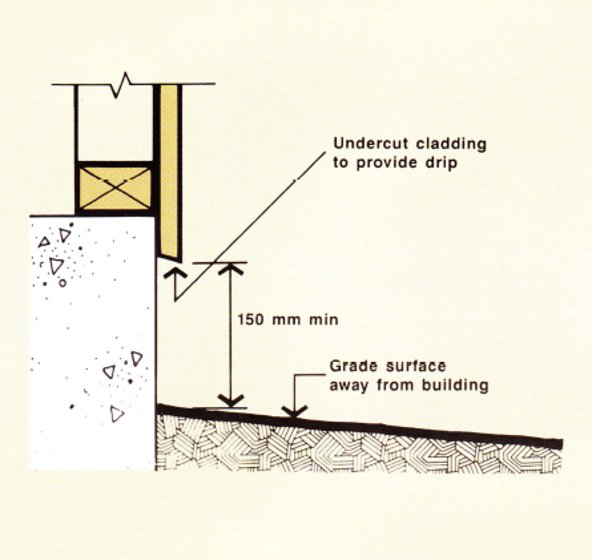
Where difficult site conditions are encountered designers should consult their local Timber Advisory Service for specialised design information and assistance.
When exposed non-vertical walls are to be clad with timber, special consideration of detailing is necessary. Weathering may be accelerated and additional protection may be needed, particularly on north facing walls. When individual board cladding is used, sarking is essential and board overlap should be increased to ensure there is adequate protection against water entering the structure.
Sarking is a waterproof but vapour permeable flexible sheet material that is fixed directly behind timber cladding. When water penetrates the cladding it serves by directing the water away from the structure to avoid it pooling and lodging within the frame. In addition it provides a draught proof barrier to keep wind driven rain or dust entering the wall cavity.
Sarking must be impermeable to liquid moisture yet still allow the free flow of water vapour from the back surface of the cladding. When vapour flow is restricted, timber cladding that has absorbed moisture during periods of wet weather has a tendency to cup as the outside face dries. Only vapour permeable building paper should be used and building papers with fire retardant properties are the best choice of these. Polyethylene film, foil, or other non permeable material should never be used as sarking immediately behind timber cladding. Manufacturers of perforated foil insulation also recommend against its use in sarking.
Where board cladding is used it is good practice to use a vapour permeable sarking on the outside of studs and directly under the timber cladding as demonstrated in the illustrated figure below. In walls subject to high wind conditions and where boarding is fixed diagonally or vertically - sarking is considered essential.

While sarking is used for general waterproofing but is not always compulsory, flashing is used at corners, vertical joints and around openings and is essential for ensuring that water is prevented from penetrating the wall frame cavity. Non-permeable materials may be used as flashing as the material does not extend fully behind the cladding. Flashing should extend beyond the ends and edges of openings and be securely fixed at least 25mm under the cladding when covered by it.
Depending on the type of construction, the intended use of the building and the climate of its location, a separate vapour barrier may be required.
The potential for condensation of water vapour within a frame is high when significant temperature differences exist between indoor and outdoor environments. Indoor 'living' activities like cooking and showering generate large amounts of moisture vapour within a building. To disperse, some of this vapour will move outward through plaster, wood and other permeable materials until it either meets the atmosphere, reaches an impermeable barrier or meets a surface cold enough for it to condense to liquid.
If water vapour is allowed to cross the cavity of a wall when outside temperatures are low, free moisture will condense on the back of cold outer cladding or sarking. Under some conditions this will be absorbed by timber frames and cladding and may eventually lead to decay in non-durable, untreated timber.
The correct placement of a vapour barrier material such as plastic film, aluminium foil or bitumen bonded insulation will overcome the problem.
Vapour barriers must be installed in accordance with the manufacturers recommendations or in accordance with AS 1904. A common recommendation is for vapour barriers to be positioned on the warm side of all infill insulation material. Click on the following image for an illustrated example.

Prior to installation, cladding should always be suitably protected against the elements, correctly sealed, prepared and then installed promptly. The common pre installation considerations are outlined below.
Timber cladding must be kept dry and clean from the time it is received on the building site until it is fixed and finished. Without protection, water marking, moisture absorption or excessive heat build up can occur, causing staining and or distortion of the cladding.
Any storage shed or protective cover must be waterproof but also allow for the free flow of air. On-site, under cover storage of timber cladding, should be on bearers spaced at no more than 900mm centres. If outside storage cannot be avoided timber stacks should be at least 150mm clear of the ground and covered with a waterproof sheet, kept just clear of the ground to allow ventilation under the stack. Coverings must not trap condensation and outdoor storage areas should be selected based on the least possibility of water pooling under the covers.
The surfaces of cladding exposed to the elements should be properly sealed and prepared so as to provide a suitable base for subsequent finishing coats. Areas not exposed to the weather should also be sealed to prevent moisture movements. The type and extent of pre-sealing will depend on the final appearance specified.
If a natural finish is required, the entire board should be liberally coated with a water repellent preservative. Water repellents should meet the requirements of AS 1607 and should be used according to the manufacturers recommendations. For those applications requiring a stained finish, the first coat of the selected finish should be applied to the entire board prior to installation.
Some pigmented stain finishes cannot be applied over water repellent preservatives and compatibility of the systems should be checked before application.
If the cladding is to be finished with paint, it is advised to seal each board all over with a primer or undercoat system prior to installation and all freshly cut surfaces should be given supplementary treatment with water repellent before fixing.
As the end grain of timber is particularly porous, the ends of each board must be effectively sealed, prior to installation to prevent moisture absorption during rainy conditions. Moisture absorption into the end grain can result in paint peeling and rotting as any moisture is trapped in the board by the finishing coats.
For end grains requiring natural or stained finishes, apply one or two liberal coats of the intended permanent finish. For paint systems apply one or two liberal coats of a primer or undercoat. To prevent water entering the frame during rainy conditions, joints between adjacent boards and at timber stops should also be sealed with a paint/stain compatible mastic or silicone sealant. Place the mastic on the ends of the boards before installing and fastening.
Allied Forest Products

ARKit
Austim Pty Ltd
Australian Timber

Bakers Joinery
Baywood Products Pty Ltd
Britton Timbers

Cameron's H Hardware

Coffs Harbour Hardwoods
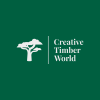
Creative Timber World

Dromana Discount Timber
DTM Timber
Franz Building Supplies

Garde Timber Pty Ltd
Green Light Milling

HYDROWOOD
Logicoat

Market Timbers
McCormacks Australia

Nannup Timber Processing

NOWarchitecture

Outlast Timber Supplies

Oxley Trade Pty Ltd

Porta
Praslas Australia

Ridgewood Timber Pty Ltd
Ryan & McNulty Pty Ltd

Sawmill Trading Company

Seriani Designs

Simmonds

Stora Enso Australia
T-Pac Lumber Pty Ltd

Tasman K.B Pty Ltd

The Log Factory
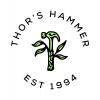
Thor’s Hammer

Timbeck Architectural

Timber Blitz Pty Ltd

Timber Revival

TLB Timber






















